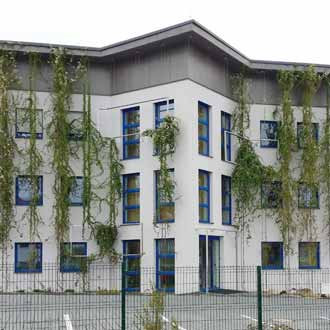Interview #1: IQRF DALI Bridge – MICRORISC
29 January 2021
Source: https://soundcloud.com/iqrf-iqrf/2021-01-iqrf-dali-bridge-microrisc

Nice day to everyone. This is Iva from the IQRF Alliance. Today I invited to our Internet of Things channel my friend Martin as a guest, he's a technician from the MICRORISC company. I'd like to ask you a few questions regarding lights control. Can you explain briefly how to control lights? How to turn on, off, change the intensity of lighting or getting some values from lights...
How can lights be controlled? This is a broad question, but if the lights can be controlled in any way, they are usually equipped with an interface that allows the light to be controlled in some way. There are several options, they are usually some standard interfaces and one of them is the 0/10 V interface or the DALI interface, which allows a lot of possibilities of use.
And how can we connect the DALI controller to a light?
The controller is either an external component or is a part of the light, and the DALI interface is a kind of standard, standardized bus, where it is possible to communicate with the device using two wires. By default, this DALI is a wired bus, a system, and an external device is used to enter the DALI commands into this system, it sends and reads commands. In short, with the help of the DALI bus, it is possible to communicate with the elements of the network and control the lights, which is usually the primary function, but the DALI standard is gradually growing. There are functions that can be used to set the lighting level, you can also set lighting profiles, you can read some values. In the DALI 2 standard, some sensors also appear so the values of such sensors and controls can be read.
Well, the wire control probably has some disadvantages, and it would probably be nice to have a wireless solution.
Exactly. The wire systems are usually suitable where someone is equipping a new building, for example, and it is possible to use wires. But if it is an existing building, then such an intervention is already quite complicated, and using some wireless solution eliminates this problem. So where it is installed in existing buildings, then there is a clear advantage of wireless.
And does MICRORISC offer any such equipment?
MICRORISC has recently released a new IQRF DALI bridge, a device that allows you to communicate with a DALI bus via the IQRF wireless network. So, it is possible to connect this device to the luminaire and communicate with it wirelessly via the IQRF network.
Sure... And what do you see as the benefits of the IQRF technology when used in these devices?
The IQRF network is a local wireless mesh network that allows you to manage and communicate with network elements very efficiently and reliably just because it is a mesh network. There is a redundancy of communication, which increases reliability. There is no necessary usage of external clouds. The range and reliability of communication are perfect.
And how many lights can be in this local network?
This network can have up to 239 elements - nodes, and 1 control element, as we say - coordinator, so a total of 240 elements in the network. Moreover, the DALI bus can work with up to 64 devices within the DALI network, if I remember well. But I would like to point out that the goal is probably not to have such a large network with such many elements. We rather work with smaller networks with a smaller number of elements. The management of such a network is more efficient.
And has it been deployed somewhere?
Certainly, we already have several successful installations. These are mainly lighting companies that use it in street lighting. For example, in Jirkov we have a system that uses these IQRF DALI bridges.
And this device, IQRF DALI bridge, can only be used for lights? Or also for some other devices?
The IQRF DALI bridge is a bridge that allows you to transmit any DALI commands. The whole DALI protocol is transparent from the point of view of this device (IQRF DALI bridge), so the use is not limited to luminaires, but it can be used for any DALI device. Our experience is that now it is mainly used in lighting. It is an outdoor solution, so it is often used in street lighting, but also in emergency lighting, and it is also used in indoor installations. We have also an installation in England. In general, this can be applied to any system where there is a DALI interface and where there is a need to replace the wired connection with wireless.
Well, that all sounds interesting. These solutions are listed, and our listeners can get more information about them, on the website www.microrisc.com or www.wireless4lights.com, or you contact us. Thanks for the interview and see you soon.
Thanks, and bye.






